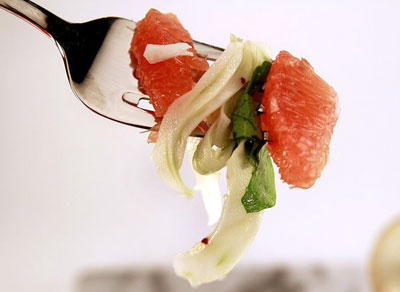 How can anyone resist tart and tiny kumquats, sitting so cute and bright in the produce department at the grocery store? They just look happy. I buy them every year as soon as they make their first seasonal appearance. I never have a plan for them when I set them in my basket, but it doesn’t matter. I buy the organic kumquats, rinse them well and, after I’ve cut the stem ends off, I pop them into my mouth one after the other, as if they were orange jelly beans.
How can anyone resist tart and tiny kumquats, sitting so cute and bright in the produce department at the grocery store? They just look happy. I buy them every year as soon as they make their first seasonal appearance. I never have a plan for them when I set them in my basket, but it doesn’t matter. I buy the organic kumquats, rinse them well and, after I’ve cut the stem ends off, I pop them into my mouth one after the other, as if they were orange jelly beans.
Yes, these little cuties are totally edible, although they do have seeds hiding inside that seem large for such a tiny fruit. To remove seeds, slice kumquats in half and squeeze them gently and the seeds will pop out.
The skin is tender and sweet, while the flesh can be dry and very tart, compared with oranges. Kumquats that are soft will be less juicy, but they are perfectly acceptable for most uses. Store them in a plastic bag in the fruit drawer of the refrigerator for up to three weeks. One kumquat has about 12 calories and is a good source of vitamin C.

 I love salmon. I probably eat entirely too much of it.
I love salmon. I probably eat entirely too much of it. The cook's year can be divided in two: tomato and not-tomato. But sometimes, even the best-intentioned, most locavore-crazy among us so crave a sweet, tart bite in our salads that we break down and grab one of those cottony out-of-season tennis balls. You've done it too. Don't try to deny it.
The cook's year can be divided in two: tomato and not-tomato. But sometimes, even the best-intentioned, most locavore-crazy among us so crave a sweet, tart bite in our salads that we break down and grab one of those cottony out-of-season tennis balls. You've done it too. Don't try to deny it. There's something about rounds of sliced onions coated with crisp, crunchy goodness and dusted with salt that I just can't resist.
There's something about rounds of sliced onions coated with crisp, crunchy goodness and dusted with salt that I just can't resist. I love herbs. I grow them, I cook with them, I eat them and sometimes just smell them for instant links to memories and tastes. Growing up in Hawkinsville as a child, our farm provided space a plenty for me to dabble in herb cultivation. It was there, on our farm, that I first learned what organic gardening was, though I did not know my “organic gardening” was “organic gardening.” I knew our cows ate our grass, drank our spring water, and breathed our surrounding air. So, I knew, somewhat instinctively, that their manure was just good… basic, natural fertilizer – the byproduct of the cows’ natural digestion. What better fertilizer, compost amendment, and soil conditioner could there be?
I love herbs. I grow them, I cook with them, I eat them and sometimes just smell them for instant links to memories and tastes. Growing up in Hawkinsville as a child, our farm provided space a plenty for me to dabble in herb cultivation. It was there, on our farm, that I first learned what organic gardening was, though I did not know my “organic gardening” was “organic gardening.” I knew our cows ate our grass, drank our spring water, and breathed our surrounding air. So, I knew, somewhat instinctively, that their manure was just good… basic, natural fertilizer – the byproduct of the cows’ natural digestion. What better fertilizer, compost amendment, and soil conditioner could there be?
